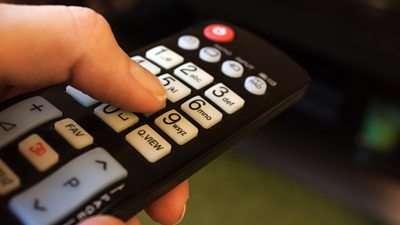In the summer of 2016, the ΒιΆΉΤΌΕΔ made an announcement that it was collaborating with other industry groups to move away from and to introduce services. By moving towards HbbTV, we aim to take advantage of newer technologies, designed for the Internet age, and ultimately to bring viewers an improved and richer interactive experience.
Since that announcement, we have been hard at work making that a reality, until at the end of November 2017, the ΒιΆΉΤΌΕΔ launched the UKβs first broadcast HbbTV application.

The team in ΒιΆΉΤΌΕΔ R&D has been working for several years as part of the HbbTV Consortium. , making sure that it meets the needs of the ΒιΆΉΤΌΕΔβs as well as the wider UK broadcast industry. We have also worked with other broadcasters and TV manufacturers to develop , which ensures that our services work correctly with different TVs and set-top boxes.
We also need to be certain that the launch of HbbTV wonβt cause problems for existing devices that people may have in their homes. R&D have designed tests of our proposed broadcast services and run them on hundreds of different TVs and set-top boxes to make sure that MHEG-only devices will continue to run unaffected. As well as running our tests in , we have also participated in "plugfest" events, where broadcasters and manufacturers collaborate to identify and fix potential problems.
As well as checking that HbbTV wouldn't disturb existing MHEG receivers, we also needed to be sure that it wouldn't introduce any problems in the technical systems that add MHEG to our services. We have been working with our colleagues in the TV & Radio Engineering team in Salford to develop a way of writing HbbTV applications that can reuse all of the data we already transmit for MHEG; this means that very little additional bandwidth is required to insert the new HbbTV code.
TV & Radio Engineering have then taken the very basic application code that we began testing with, and have turned it into a fully-fledged Red Button service, ready for viewers at home to start using. Throughout the time we have been developing this service, The Engineering and R&D teams have been closely linked and we have worked hard to feed back our experiences to HbbTV, so that the industry as a whole can benefit from what we have learned in producing a large-scale application.
But the story doesnβt end there. Adding HbbTV to an existing channel requires changes to our playout and transmission infrastructure, and have worked closely with us and TV & Radio Engineering to plan how and when those changes will happen. We have been introducing the necessary changes step-by-step over the second half of this year, and our application has already spent several weeks on air but in a βhiddenβ state.
On 9th November, we finally made the change to our playout systems to remove the βhiddenβ state, and set our HbbTV service live. This is only the first step, as we will continue to roll out the service across more ΒιΆΉΤΌΕΔ channels, and to work with TV manufacturers to get their products ready to use it, but it marks a key moment in the UKβs transition to the future of interactive broadcasting.
-

Broadcast and Connected Systems section
Broadcast & Connected Systems primarily focuses on how ΒιΆΉΤΌΕΔ content reaches our viewers through broadcast and Internet delivery. This involves the whole broadcast chain from playout, through coding and distribution to consumption on the end-user's device. Our work typically covers a period from now through to 3 years out from deployment.